Caring for tomatoes in a greenhouse: watering and pollinating

To reap a rich harvest of tomatoes, you need to take the time to properly care for your vegetables. In the greenhouse plants are more sensitive to care than in open ground.
Content:
Care
After planting, caring for tomatoes in a greenhouse consists of three mandatory components:
- watering;
- pollination;
- ventilation.
Watering tomatoes begins 12 days after planting. Tomatoes do not like soil that is too wet. Therefore, watering norms should be strictly observed: 4 liters per 1 m2 - before flowering, 12 liters per 1 m2 - during flowering and fruit formation.
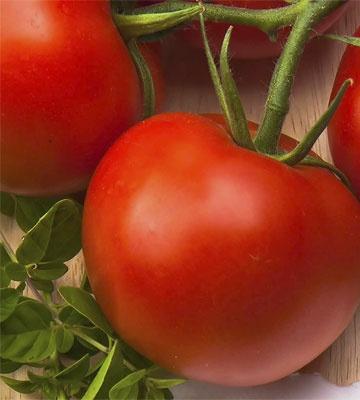
Tomatoes need to be watered every 5-6 days. It is important to ensure that the water temperature is not lower than +22°C. It is necessary to ensure that the humidity in the greenhouse is not high, because... this prevents flowers from pollinating. In addition to natural pollination, tomato flowers also need to be pollinated mechanically.
To do this, you need to shake the inflorescences daily. It is better to do this during the day in sunny weather. After shaking the flowers, the plants are sprayed and the greenhouse room is ventilated.
True, spraying and accumulation of condensate in the greenhouse can lead to the development fungal diseases. Therefore, it is better to combine spraying with foliar feeding and alternately add Fitosporin or Gamair.
Ventilation is a very important point in caring for tomatoes in a greenhouse. To regulate the humidity in the room, vents should be provided. For tomatoes, the comfort temperature is +19°C - +22°C during the day and +16°C -+20°C at night.During the flowering and fruiting period, the temperature should be 1-2 degrees higher (but not higher than +27°C).
Feeding
Also, don’t forget about feeding. You need to start feeding the plants from the moment the first ovary forms. Depending on the growth phase, you can use liquid mullein, potassium sulfate, superphosphate and wood ash.
Liquid supplements made from herbal teas are good.
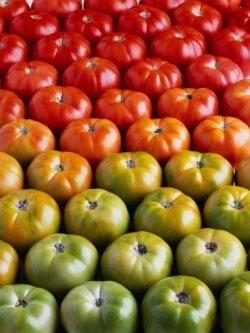
Over a week or two, plant residues are tightly packed into a container (weeded weeds can be added) with the addition of nettles, and filled with warm water. The container is closed with a lid. You can add mullein and preparations with microorganisms to it. If you are going to fertilize at the root, then the resulting infusion is diluted 1 part to 20-30, for foliar fertilizing it is diluted more, about 40-50 times.
Priming
As a rule, many pathogens and pests accumulate in greenhouses over time. But if you think through and make the correct soil laying, and then systematically care for it, you can avoid the grueling frequency of soil replacement.
The first bookmark (or replacement) is done like this. The soil is taken out of the greenhouse on a bayonet and spilled with water. Then the surface is covered with a transparent film and left for a month or two under the so-called steam. By autumn you can sow some green manure. They actively sprout even in October and quickly gain green mass. Sowing cruciferous crops with legumes gives good results; they help against root rot.
In early spring, a mixture of compost, garden soil and sand is added (directly to the green manure). The soil is carefully compacted and spilled. Already in March, you can sow again any spring green manure, except rye.Rye is too allelopathic, its root and leaf secretions can suppress tender tomato seedlings.
By the time the seedlings are planted, the beds are marked, and their boundaries are secured with borders.
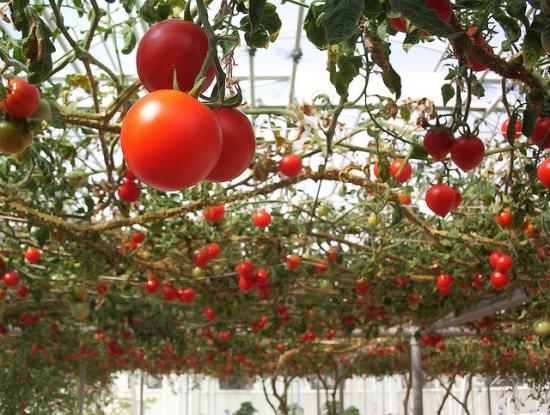
Various materials are suitable - bricks, boards, slate. It would be a good idea to lay boards or tiles along the paths - the earth does not like to be trampled. The grown green manure plants are not pulled out, they are simply cut off at the root and placed in the beds.
After planting the seedlings, the entire free area of the ground is covered with a large layer of compost. Then, throughout the season they add mulch layer from straw and mown grass. A large layer of mulch prevents the spread of late blight even if its spores enter or remain in the greenhouse. The lower leaves are torn off and not allowed to come into contact with the ground.
The presence of earthworms also affects soil health. Therefore, you can collect them at the bottom of the compost heap and transfer them along with the substrate. It is good to sow legumes between the rows; they enrich the soil with nitrogen, and the root system of tomatoes will completely entwine their roots by the end of the season. Sown along the borders basil. It gets along well with tomatoes and makes the taste of the fruit more intense.
So, growing tomatoes in greenhouses is a very exciting household activity. By learning to ventilate the greenhouse in a timely manner, providing systematic watering and helping the plants a little with pollination, you will achieve a good harvest. And in order not to change the soil often, start healing the soil by regularly adding organic matter, then maintaining the greenhouse will become very easy over time. Of course, you won’t be able to achieve a 100% recovery in a year. But within three years you will experience a real improvement in the microflora in your greenhouse.


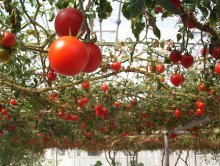
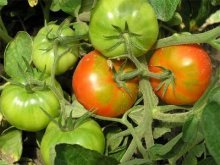

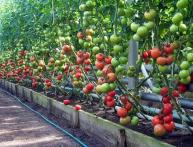
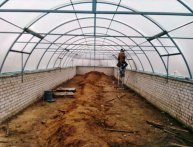
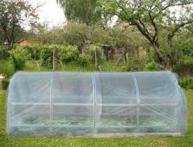
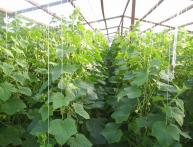
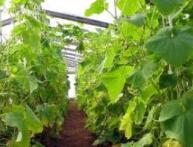

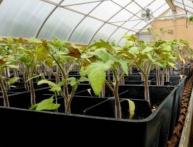
Comments
In principle, I agree with the author of the article that growing tomatoes in a greenhouse is not that difficult. And the article contains all the main criteria. The only thing I want to add is that not every variety is suitable for greenhouse cultivation.